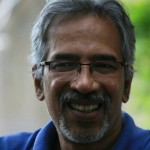 Pushkar Kanvinde is an Urban Designer and a full time educator. Presently, Principal at B.K.P.S College of Architecture, Pune. He has served in various capacities on a number of professional and academic organisations like, Council of Architecture, India, and IUDI. He has also been invited to number of seminars and conferences to express and share his view on education and the profession.
Pushkar Kanvinde is an Urban Designer and a full time educator. Presently, Principal at B.K.P.S College of Architecture, Pune. He has served in various capacities on a number of professional and academic organisations like, Council of Architecture, India, and IUDI. He has also been invited to number of seminars and conferences to express and share his view on education and the profession.
Following are the views by Pushkar Kanvinde, on Architecture Education
AL: Architecture Profession has changed over the last decade. New technology, new materials and new skill sets have emerged and posed the new challenges for architecture education in India.
In your view, what steps should educators and architecture institutes shall take to prepare students to meet the expectations of the profession and the new challenges?
PK: Students today are much better informed. However, they are so much bombarded by information that they do not have time to assimilate the information into knowledge that could be applied. Trouble today is students keep faith in whatever is available on the internet and regard it as correct information and they believe that information that is not available on the internet does not exist in reality. They take information as knowledge and hence are confused about application.
In this situation, educators have to focus on enabling students to understand and pick the right information and also develop in the students’ skills acquire knowledge and apply the same in real life projects. The effort should be to develop the student into a perpetual learner who can judiciously seek information, understand the same and use the knowledge in real life with wisdom. The focus must change from teaching the student to helping learn on own. The Educator must limit his role to that of a facilitator. At the same time educator must be well aware of the changes happening in the profession.
AL: Teachers expect students to be creative and innovative, in what ways do you think even teachers can innovate and be creative within the framework of syllabus and guidelines provided by the Universities and the Council of Architecture?
PK: The framework of syllabus provided by the universities or guidelines provided by the council of architecture is generally flexible. It tells you about the end objective and what abilities the student must possess at the end of the course. How to achieve the goals and the objective is left to teachers. Teachers can device innovative ways to make students respond in creative, innovative manner and in the process learn the content intended to be learnt. More important, as I said earlier, is to shed the mindset ‘educators have to teach’ and understand the new role as ‘educator who helps the student learn’.
AL: You think modern architecture is losing its social conscience? If yes, how can institutes and educators make students aware of their social responsibility?
PK: Architecture usually reflects society. At the same time, architecture can also influence social behavior. Architecture is also an art that, unlike many other arts, first needs a patron. Today, we can see that there is general social apathy about visual art. Not just modern art and architecture, this is the trait of society in general. One can observe a decrease in philanthropic attitude that is one of the indicators of social conscience. No wonder, effect of this change in social behavior is also seen to some extent in contemporary architecture. Somewhere, decline in direct personal communication without involvement of media. If we can promote one to one communication between people, start respecting art as a key ingredient to being a good human being, the social conscience will develop automatically and the community behavior will be more responsive. That will readily reflect in Architecture too.
AL: Please share your message for Architecture Educators.
PK: Keep update with the profession and technology in the real world. Change your mindset and prepare yourself to make best use of available technologies, particularly information technology, in an innovative manner without you yourself falling victim to it.






